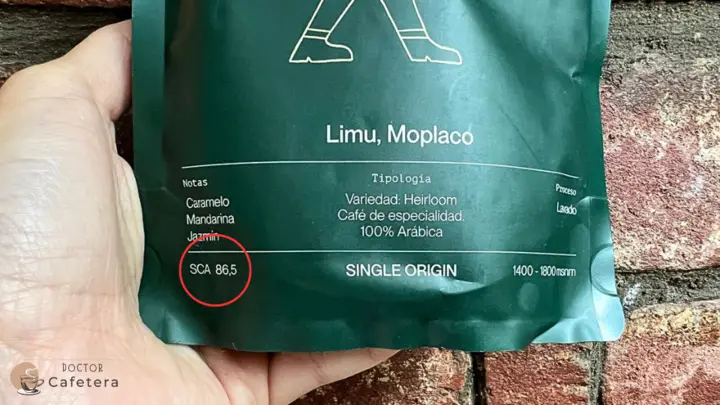Delving into coffee involves discovering essential aspects of its fascinating complexity. A fundamental pillar is the Specialty Coffee Association (SCA), an entity that extends its influence and wisdom, encompassing from coffee bean producers to baristas and coffee enthusiasts worldwide.
The main objective of the SCA lies in imparting knowledge about the nature of specialty coffee and, at the same time, contributing to promoting a just, sustainable, and enriching industry for all coffee lovers.
How was SCA born?
The Specialty Coffee Association (SCA) originated from the merger of two previous organizations dedicated to the coffee world: the Specialty Coffee Association of America (SCAA) and the Specialty Coffee Association of Europe (SCAE).
The SCAA and SCAE were independent entities that shared a common interest in promoting and elevating coffee quality but operated in different parts of the world. Unifying these two organizations arose to consolidate efforts, resources, and knowledge in specialty coffee.
In 2017, the merger was realized, giving rise to the formation of the Specialty Coffee Association (SCA). This new global organization became the unified voice of the specialty coffee community, bringing together professionals, coffee enthusiasts, and producers under one roof.
What is SCA, and what is its role?
The SCA stands out in the coffee world for multiple reasons. Its focus and central function lie in promoting and maintaining the highest standards of excellence in every phase of the coffee supply chain, from cultivation to the final cup.
In addition to its commitment to quality, the SCA bridges the gap between the various parties involved in the coffee industry. It facilitates connection and collaboration among producers, roasters, baristas, and coffee enthusiasts worldwide, creating an interconnected community that shares knowledge, experiences, and best practices.
The society provides a wide range of educational resources, certification programs, and training opportunities. This commitment elevates the quality of coffee at all stages, benefiting both consumers and creators of the beverage.
The SCA seeks to better understand coffee’s scientific and practical aspects, from its impact on health to its role in sustainability and the economy. This commitment contributes to the constant evolution of agricultural practices, processing methods, and preparation techniques, driving innovation across the industry.
Through its advocacy for equity in the supply chain and fair compensation for farmers, the SCA advocates for a coffee industry that benefits all stakeholders equitably and sustainably.
The events and competitions organized by the SCA are another highlighted feature. Events like the World Barista Championship and the World Coffee Roasting Championship provide a platform for recognition and increase respect for the talented individuals contributing to this industry.
The cupping process under SCA protocols
An essential part of this process is the preparation of samples for cupping. Following SCA protocols, you need five cups of each type of coffee to be tasted. Each cup must contain 8.25 g of coffee per 250 ml of water.
At this point, it’s important to weigh and grind the beans to be used in each cup separately (just before cupping to avoid flavor loss) to be able to detect any flaws.
It’s important to note that the cupping process under SCA protocols is highly specialized and aims to ensure accurate and consistent results in evaluating different coffee attributes.
Avoid cupping with just one cup, which might lead to inaccurate conclusions. If a defective bean slips into a single cup, it could give the impression that the coffee has been poorly processed or is of low quality. A single defect in one of the five cups should not be a reason to label the entire coffee as low quality.
How does SCA define specialty coffee?
The way SCA defines and distinguishes authentic specialty coffee is a facet that stands out in its approach. For coffee to receive the specialty rating, it must undergo an evaluation process that spans several stages:
- Selective harvesting: The harvesting process is vital, as it’s done manually to identify fruits in optimal conditions.
- Rigorous control: Despite undergoing previous verification, the berries are re-examined for first-grade defects that may have gone unnoticed. If any defects are identified, the sample is discarded to ensure quality.
- Roasting and preparation process: Coffee evaluation continues until the final stage, when it reaches the cup. This is where the Q-Grader comes into play and conducts the cupping, assessing attributes such as fragrance, aroma, and flavor. The score must exceed 80 points out of 100 for the coffee to be considered specialty.
Additional aspects influencing the score:
- Absence of defects: Green coffee beans should not have first-grade defects like immature or black beans.
- Second-grade defects: The green coffee sample may contain up to five second-grade defects, such as broken or wrinkled beans, while still maintaining an acceptable level of quality.
- Controlled moisture: The moisture content of the beans should be below 0.70 aw, ensuring suitable stability for storage and preservation.
The SCA uses a comprehensive and rigorous approach to define authentic specialty coffee, ensuring it meets high-quality standards and exceptional attributes.
What sets specialty coffee apart from commercial coffee?
Distinguishing between specialty coffee and commercial coffee is easy when considering different key aspects:
Origin and bean variety
Commercial coffee relies on lower-quality Robusta beans, while specialty coffee comprises the Arabica variety.
Harvesting process
While commercial production often involves mechanized harvesting methods and doesn’t emphasize the degree of bean ripeness, specialty coffee is carefully and manually harvested, ensuring meticulous selection.
Roasting and defects
Commercial coffee is often roasted darker to hide possible defects, while specialty coffee stays true to its natural profile. Additionally, certified Q Graders evaluate specialty coffees to ensure they don’t have defects that could impact the sensory experience.
Label information
Specialty coffee packaging commonly includes comprehensive information such as roast date, bean origin, botanical variety, growing estate, and other relevant details. In contrast, commercial coffee packaging often lacks this transparency.
Sensorial complexity
Specialty coffees stand out for their rich complexity of aromas and flavors, offering much more than a simple bitter note.
Acidity and quality
Well-balanced acidity is a hallmark of high-quality specialty coffees, unlike commercial coffees lacking this characteristic.
Impact on coffee farmers
Specialty coffee farmers have the opportunity to enhance their practices and produce high-quality coffees, allowing them to earn a fairer price for their labor and dignify their role in the supply chain.



